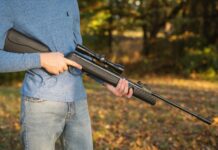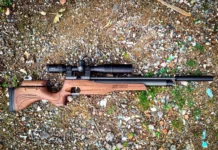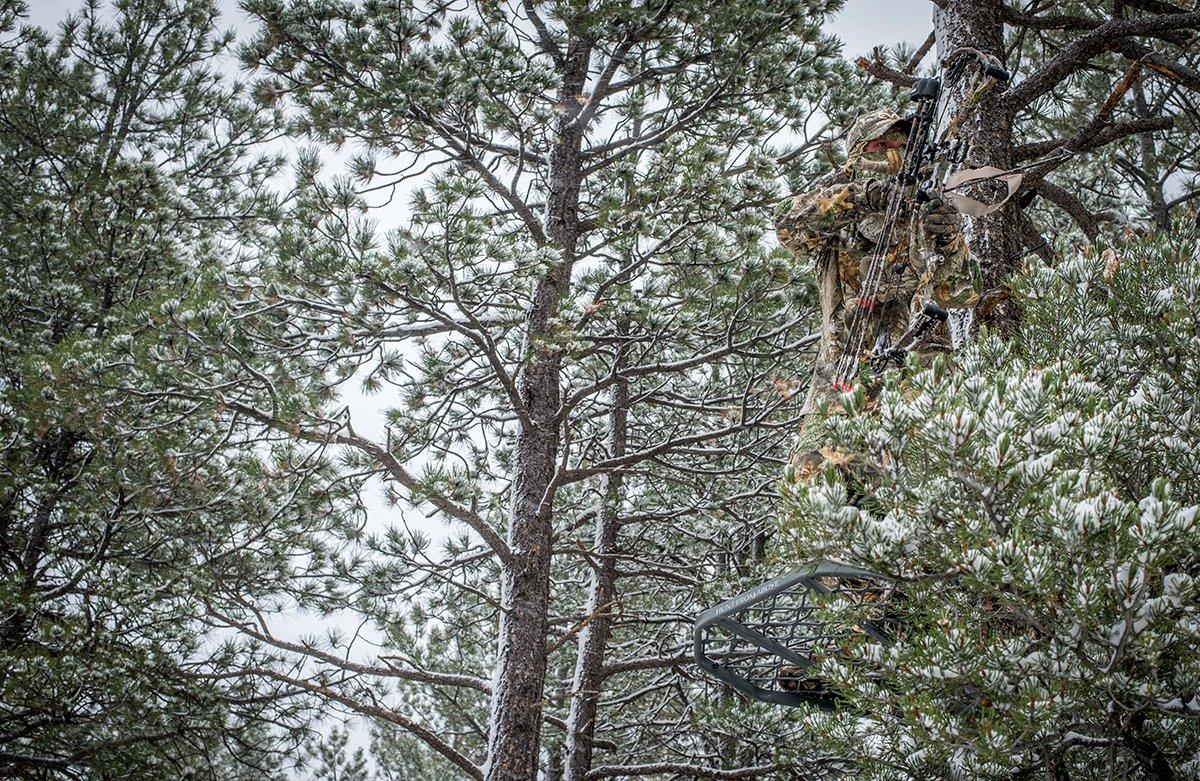Hunters who share access and hunt together tend to name treestands and blinds. It’s fun and necessary, especially when trying to identify where someone is going for the day. So, if you’re slapping a handle on a spot, why not make it creative, funny or even weird? Here are 20 real-life honey holes that fall into those categories.
Table of Contents
- 1. Rut Roof Inn
- 2. Yellow Brick Road
- 3. Crash Site
- 4. Church
- 5. Easy Pickens
- 6. Maternity Ward
- 7. The Penthouse
- 8. Cat Gut
- 9. Control Tower
- 10. Droptine Hotel
- 11. Terror Tower
- 12. The Hangover Stand
- 13. Coke Bottle Stand
- 14. Freezer Foray
- 15. Death Bunker
- 16. Melting Pot
- 17. Buzzard Blind
- 18. The Land Strip
- 19. Sunglasses
- 20. Dead Man Stand
1. Rut Roof Inn
Kentucky hunter Logan Beach once planted a food plot close to bedding cover. We would have bucks bed on the edge off about 30 yards and wait on does, he said. We thought of it as a hotel bed and breakfast. Thus, it became Rut Roof Inn.
2. Yellow Brick Road
Another Beach special, Yellow Brick Road is self-explanatory. It’s a set on a main corridor between a major food source and a corn pile, he said. (There was) constant deer movement, and whichever way they turned off dictated which spot they would end up at for the day.
3. Crash Site
Kyle Culbreth, another Kentucky hunter, had a scare several seasons ago. In 2009, he fell from an elevated platform. I had a treestand break and fell 25-plus feet, he said. That stand location is now called Crash Site.”
4. Church
Deer diehard Luke Koch has a spot he calls going to Church. It’s at the end of a long draw, and an old, white country church is nearby. At 9 a.m., the bells toll, and you can hear it well from the treestand.
5. Easy Pickens
Big-game hunter extraordinaire Jonathan Losli hunts a lot. And this past season, he had a treestand produce in a big way. It relinquished one elk and two deer on the opener. Now, he calls that spot Easy Pickens.
6. Maternity Ward
Audrey Pfaffe is another serious whitetail hunter, and a spot she used to hunt is aptly named. There was a wooded hillside at my grandpa’s old dairy farm that the cows would always sneak off into to have their calves, she said. We call it the Maternity Ward, as a lot of bucks would bed in there since it was so thick.
7. The Penthouse
Kate Sanford is a big-buck slayer, and one of his spots is comfortable. We have an enclosed stand that a friend built, and we call it The Penthouse because it was the fanciest we had ever had, she said.
8. Cat Gut
Dave Skinner is a hunting land real estate agent and a longtime deer hunter. A spot a friend of his hunts is called Cat Gut. I’m not creative enough to come up with good names, but Cat Gut was named after the shape the river made as it winds through the property, he said. Looks like an intestinal tract.
9. Control Tower
Zack Smith hunts the outskirts of a major international airport. We have a ladder stand on a big ridge that overlooks a huge draw, and it’s way up there, he said. So, in true airport fashion, we’ve dubbed it the Control Tower.
10. Droptine Hotel
Jason Kidd had never killed a droptine deer. Then, he wrote it into existence. When Dad and I built our first shooting houses for the farm, I came up with a name for mine, he said. I took a Sharpie and wrote on the inside of the blind that it was the Droptine Hotel. I had never killed a deer with a droptine, but it sounded cool. The next year, I killed my first deer out of that old shooting house, and it had a 4-inch droptine.
11. Terror Tower
Tommy Warder’s scariest hunting spot is called Terror Tower, and for good reason. We had a 15-foot open-topped tower stand in a brushy field, he said. The stand was wired to a tree that would sway back and forth when the wind blew.
12. The Hangover Stand
Realtree’s Will Brantley is an outdoor editor, writer, and hunting outfitter. One spot that might not get hunted often is called The Hangover Stand. It’s about 100 yards from the back door of the cabin.
13. Coke Bottle Stand
Sid Herring Jr. has tagged many deer from The Coke Bottle Stand. It got the name after he found a great treestand location in a well-traveled draw. It had an old glass Coke bottle placed in a fork, and the tree had grown around it, he said. Killed many deer out of that stand on that tree.
14. Freezer Foray
Someone once unceremoniously and disrespectfully dumped an old freezer on Kevin Thayer’s property. He decided to make the best of it and shot a big 10-point buck from it. Someone else’s massive litter worked out well for him.
15. Death Bunker
Deer hunter Aaron Mudd calls one spot Death Bunker, in respect to the many whitetails and turkeys taken from it. The name comes from all the blood shed on it in years past, he said. It’s the one spot on the farm that if someone needs a deer, we go to (it). It has never failed to produce.
16. Melting Pot
Seth Martin hunts a spot called Melting Pot, because it gets hot during early archery season. The sun bakes you, he said. But if you can stand it, it’s going to produce. Later, I put a box stand there. The name stuck.
17. Buzzard Blind
Outdoor writer Darron McDougal hunted in Georgia this past season and sat in one blind a few times. He called it Buzzard Blind because of the heavy sign of buzzards frequenting it. Eventually, toward the end of the hunt, he shot a good buck from it.
18. The Land Strip
Kyle Campbell dubbed one of his favorite spots The Landing Strip. It’s on a creek crossing, and they cleared up the brush and made the crossing so wide it looks like you can land a plane in there, he said.
19. Sunglasses
One of the deadliest treestand locations on a farm I hunt gets blasted by the sunrise. On cloudless mornings, you can’t look eastward without a set of sunglasses. Thus, it came to be known as Sunglasses. But man, it’s a killer spot, and I can think of at least 10 mature bucks taken from it since 2015.
20. Dead Man Stand
Another great stand location on a property I hunt is on the edge of an old cemetery. At first, I called it Dead Man Stand. However, out of respect to those who rest there, I later changed it to Cemetery Stand. Afterward, we started knocking down some big deer from it, and it has relinquished several 4-½-plus-year-old bucks since.
Do you have some unique, funny or downright weird treestand and ground blind location names? If so, drop them in the comments section, and tell us all about them.
(Don’t Miss: 20 Deer Hunting Lies Your Granddaddy Told You)













































![Air gun 101: The differences between .177 & .22 – Which jobs they do best ? [Infographic]](https://airgunmaniac.b-cdn.net/wp-content/uploads/2024/11/1773-150x150.jpeg)